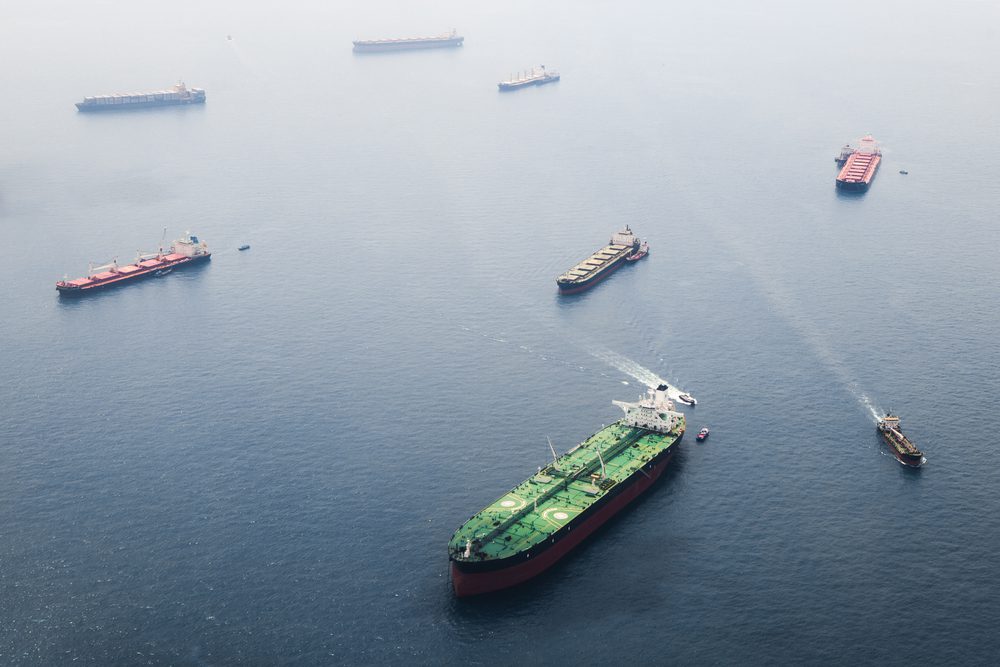(Bloomberg) —
Ukraine’s fight against Russia’s invasion has entered a new phase, pitting homegrown drone technology against a 2,000 kilometer (1,200 mile) swathe of largely Soviet-era oil facilities.
At least nine major refineries have been successfully attacked this year, currently taking offline 11% of the country’s total capacity by some estimates. As the conflict at the front lines has shifted in Moscow’s favor, the drone campaign is becoming a key plank of Ukraine’s defense — both in its symbolism and its strategic aims.
It gives Kyiv the ability to reach deep into Russian territory and strike an industry that’s crucial to the Kremlin’s war effort, providing both supplies of fuel to its armed forces and a flow of petrodollars into its coffers.
“Russia is a gas station with an army, and we intend on destroying that gas station,” Francisco Serra-Martins, co-founder and chief executive officer of drone manufacturer Terminal Autonomy, said in an interview. “We are going to focus on where it hits the hardest, and that’s financial resources.”Play Video
Even as the drone campaign becomes a success story for Ukraine’s military — badly needed after a series of Russian gains on the battlefield — it is a potential wild card for world markets and Kyiv’s Western allies. International oil prices have risen steadily in recent days amid growing fears that the attacks, which have largely inflicted attritional damage so far, could one day take out a major export facility.
It was only six weeks ago that the government in Kyiv established the Unmanned Systems Forces, a specialized unit focused on drones. By that point, Ukraine’s armed forces had already used the technology to great effect, destroying a number vessels in Russia’s Black Sea fleet and damaging an oil facility on the Baltic Sea.
“Drones – unmanned systems – have proven their effectiveness in battles on land, in the sky and at sea,” President Volodymyr Zelenskiy said on Feb. 6. “The large-scale destruction of the occupiers and their equipment is also the domain of drones.”
By the middle of February, drone attacks had damaged five oil refineries. In the immediate aftermath, Russia banned gasoline exports from March 1 until Aug. 31 to ensure sufficient domestic supplies ahead of a seasonal uptick in demand.
“Ukraine’s leaders seem to feel that, even if they remain on the defensive, they need to be able to continue to inflict pain on Russia,” said Peter Schroeder, a former senior analyst on Russia at the US Central Intelligence Agency. What started out as a largely symbolic effort, notably last year’s drone attack on the Kremlin, has become “a concerted campaign to inflict damage on a strategic target.”
This success didn’t come easily, according to drone manufacturers who spoke to Bloomberg. The vehicles had to be designed to overcome Russia’s sophisticated jamming capabilities, using terrain navigation or visual positioning that doesn’t require any electronic communications after launch. They need to operate over ranges as long as 1,000 kilometers while also carrying a large enough explosive payload to inflict meaningful damage on facilities that were built to be resilient.
Second Wave
Ukraine’s drone campaign shows “we are not limited exclusively to the front line, but we are also performing our tasks at sea and deep behind enemy lines,” Vasyl Malyuk, the head of Ukraine’s State Security Service, told Bloomberg on March 12. “We are not going to stop.”
A second wave of drone attacks began that same day, damaging some of Russia’s largest refineries — Norsi in Nizhny Novgorod and Ryazan near Moscow. Despite several attempts, the unmanned aircraft failed to strike Surgutneftegas’s refinery in Kirishi, a key facility on the Baltic coast making fuel largely for export.
The flurry of attacks prompted a surge in prices for gasoline and diesel on the St. Petersburg International Mercantile Exchange, although the cost of the fuel at the pump within Russia saw little movement. The country may have to divert more crude oil for export because of the impact on its refining rates, Tass reported, citing First Deputy Energy Minister Pavel Sorokin.
Beyond Russia’s borders, the oil market has shown only a modest reaction to the drone attacks, despite the country’s status as a major exporter. Crude futures have ticked higher amid a perception of rising geopolitical risk. While benchmark European diesel prices have also gained, they remain below the levels seen in February at the height of the Houthi attacks on Red Sea shipping.
That could change if Ukrainian drones managed to take Kirishi offline, potentially eliminating about 150,000 barrels a day of diesel production primarily intended for export. Crude markets could experience more jitters if Kyiv started targeting Russia’s main oil-export terminals in the Baltic or Black Seas.
“If Ukraine wanted to escalate its pressure on Russian oil refining revenue, they would target the key product export terminal infrastructure at the ports of Primorsk or Novorossiysk,” said Mark Williams, research director for short-term oils at consultant Wood Mackenzie Ltd. “However, that would further pressure the relationship with its Western allies as the impact on global oil and refined product prices would be substantial.”
For now, Ukraine’s drone campaign is focused solely on having an economic impact within Russia — hampering the country’s ability to process crude oil into fuel and wearing down its air defenses.
“It’s basically a new form of attrition warfare where these systems get deployed in massive volumes against strategic sites,” said Serra-Martins of Terminal Autonomy, a US company with production facilities in Ukraine that was founded last year. The drones are designed to be low-cost and single-use, meaning missiles from Russian air defense systems can cost up to 40 times more than the aircraft they’re targeting.
Even if the drones get shot down, it’s still an economic win, he said.
The attacks also have a psychological goal, said another drone manufacturer who spoke on condition of anonymity. Moscow’s propaganda tries to make its citizens forget the nation is at war, but long lines at fuel stations would bring the reality of conflict to their daily lives, the person said.
While Russian governors are often the first to comment on drone attacks at refineries in their official Telegram accounts, the authorities have made a concerted effort to mute any impact on the wider population. Several regions have asked people not to film drone attacks or take pictures of the damage they cause. The government of the Leningrad region went as far as banning such videos and pictures, although the punishment for violating the order has yet to be determined.
“This is taken very seriously,”said Alexei Mukhin, head of the Moscow-based Center for Political Information, which provides consulting services to the presidential administration. “The population wants to know when Russia’s going to hit back.”
Moscow has been weighing a plan to make it easier to deploy military-grade defenses at its oil refineries, people familiar with the discussions said last month. That could include Pantsir missile systems, Interfax reported on Tuesday.
Strategic Impact
Drones have become an increasingly important element in Ukraine’s military strategy, but they aren’t a substitute for sophisticated weapons from the North Atlantic Treaty Organization, according to several prominent businesspeople who help finance their purchase.
Kyiv has to rely on these unmanned vehicles because its allies are reluctant to provide long-range missiles capable of destroying targets deep within Russia, for fear of escalation. On top of this, the months-long holdup of $60 billion of US military aid in Congress has left Ukraine increasingly short of even basic ordnance such as artillery shells in the face of recent Russian advances.
“The campaign against Russia’s energy infrastructure shows that Kyiv can continue to inflict some pain,” said Schroeder, the former CIA analyst who is now an adjunct senior fellow at the Center for a New American Security in Washington. “But it is unlikely to have a strategic impact on the course of the war.”
Russia also produces cruise missiles and long-range drones of its own, including the Iranian-designed Shahed, which it uses to strike civilian and military infrastructure in Ukraine. Zelenskiy said this week more than 320 Shaheds were launched in March alone.
More than two years after Russia’s invasion of Ukraine, with military setbacks on the front lines and wavering support from Western allies, the success of Ukraine’s refinery attacks suggests the drone campaign will continue.
“These weeks have demonstrated to many that the Russian war machine has vulnerabilities that we can reach with our weapons,” Zelenskiy said on March 16. “What our own drones are capable of is a true Ukrainian long-range capability. Ukraine will now always have a strike force in the sky.”
With each month that goes by this year, Kyiv’s armed forces will have more unmanned vehicles operating over Russian territory, said Mykhailo Fedorov, the country’s digital transformation minister whose responsibilities also include overseeing the manufacture of the aircraft.
“It will be an unprecedented quantity of long-range drones,” Fedorov said.
© 2024 Bloomberg L.P.

 Join The Club
Join The Club










